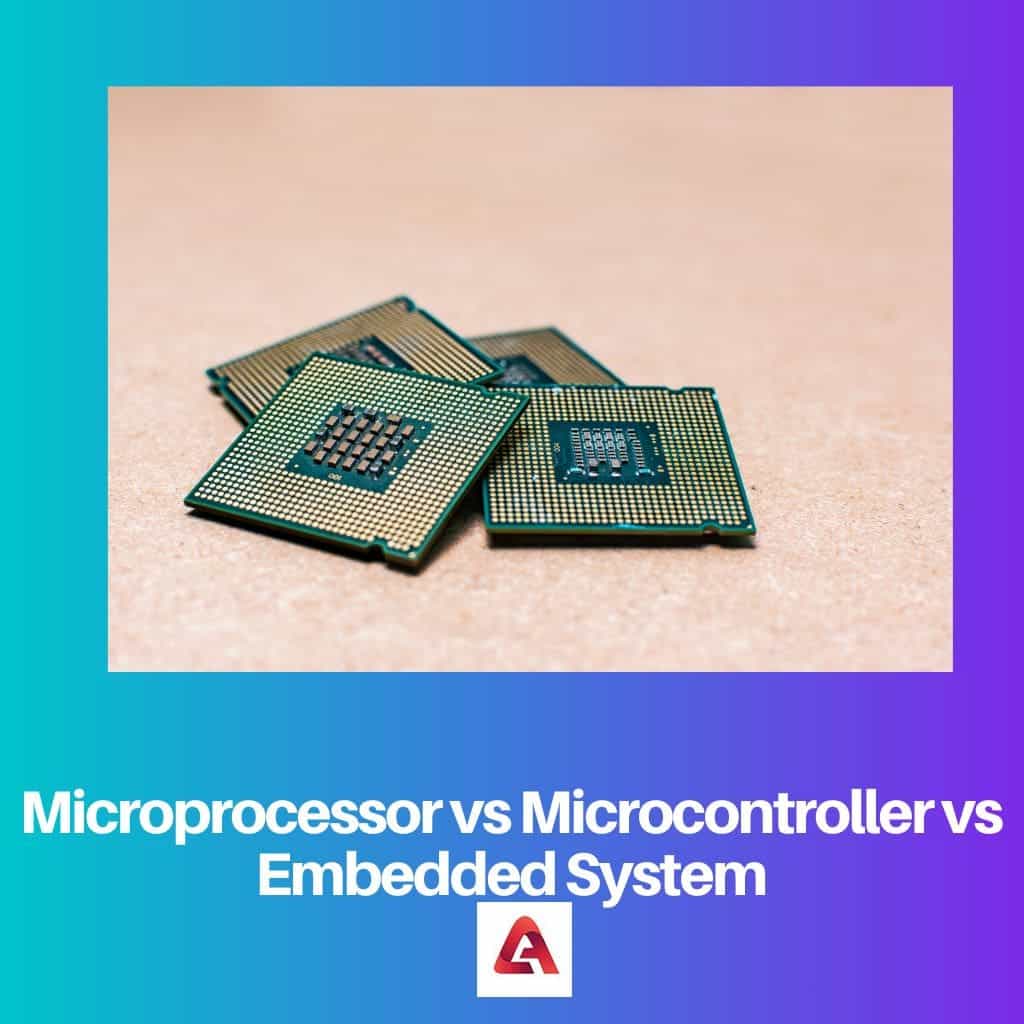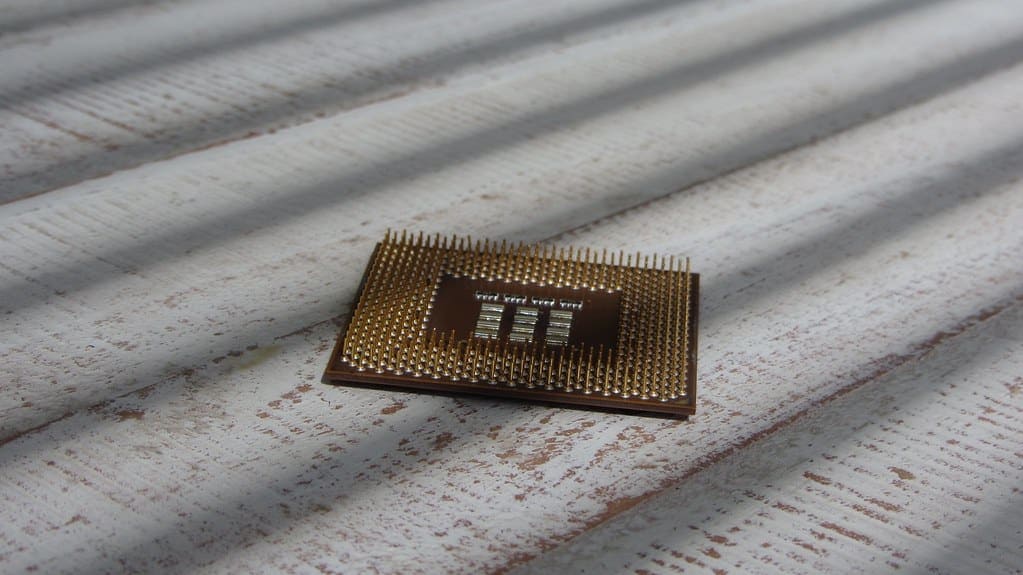The processes performed by a computer and other devices are backed up by the mastermind chips present in the peripherals or the hardware devices. Microprocessors, microcontrollers, and embedded systems are examples of the controlling and processing units that execute the information and store many programmable instructions with the ways to perform processing.
Key Takeaways
- Microprocessors are integrated circuits designed for general-purpose computing and can execute complex instructions.
- Microcontrollers contain microprocessors, memory, and input/output peripherals, making them ideal for specific, single-function applications.
- Embedded systems are self-contained, specialized computing devices integrating microcontrollers or microprocessors to perform dedicated tasks.

Microprocessor vs Microcontroller vs Embedded System
The microprocessor performs a single task at a time. It performs computational and logical tasks. It has thousands of mini chips and circuits. It is high in cost. Microcontroller can perform various tasks at a time as it has multiple chips embedded. Embedded systems can perform thousands of tasks at a time. It has very little complexity.
A microprocessor is a small chip that contains functions performed by the system, i.e., logical and computational tasks that are the basic computer aspects. It is a small unit in the form of a hardware device that performs processing at a higher speed and makes the computer system functional.
A microcontroller is a device with an embedded microprocessor and storage devices such as RAM and ROM that controls the working of these peripherals and guards down the whole system. They are classified into systems based on the nature of the device, the computing speed, and the type of tasks performed.
An Embedded system is an integrated chip with a microcontroller and microprocessor attached to it and is used to perform high-level and specified tasks for devices based on the requirement of the systems. Almost every smart device consists of an embedded system with other hardware and software capabilities.
Comparison Table
| Parameters of Comparison | Microprocessors | Microcontrollers | Embedded Systems |
|---|---|---|---|
| Nature | They are used to perform a single specific task at a time | Microcontrollers perform various tasks as it has many chips embedded | Embedded systems can perform thousands of run-time tasks due to both microprocessors and microcontrollers installed on the hardware. |
| Complexity | Microprocessors are more complex due to their capability to perform logical operations. | Microcontrollers are less logical and complex than microprocessors. | Embedded systems are less complex as they lack the logical aspects of a microprocessor. |
| Replacement | Microprocessors are not so easy to replace as it contains complex logical operations in low-level languages | Microcontrollers are easy to upgrade and replace in the systems | Embedded systems become more complex with replacement and are not easy to replace. |
| Cost | Microprocessors are high in cost | Microcontrollers are relatively low in cost than the microprocessors | Embedded systems are cheaper than microprocessors and microcontrollers. |
What is Microprocessor?
A microprocessor is the central processing unit of the computer system based on a unit that contains instructions to perform the various tasks performed by the computer system. The basic tasks that a microprocessor performs are based on two things, i.e., it performs both logical and computational tasks. It is made up of thousands of combined circuits and mini chips bound all together.
The microprocessors have various classifications, and each one is distinguished based on their processing speed and the instructions processed per time. The arithmetic operations include all the addition and subtraction tasks where the logical part of the microprocessor performs the logical operations and have decision-making capabilities based on the logic incorporated.

What is Microcontroller?
A microcontroller is a small integrated chip containing the microprocessor chip, memory, and other important peripherals that the computer uses to perform basic operations. Although microcontrollers are confused with microprocessors, they are regarded as the same, where they differ in a few aspects.
All the memory devices, such as RAM, ROM, and SSD, are embedded in the microcontroller, which governs their functionality. Microcontrollers are used in every modern device, such as the microwave, automated automobile systems, home, and professional appliances, or any other device that performs basic tasks based on their specifications.

What is Embedded System?
Embedded systems are a combination of microprocessors and microcontrollers used to perform specific functions. It consists of both hardware and software combined in an integrated system. An embedded system can have a single microprocessor or too many of them combined based on the nature of the device and its tasks.
The embedded systems become complex when the machines or devices in which they are incorporated perform various tasks simultaneously or are multi-functioning. These embedded systems are now incorporated in control system devices, toys, robots, or any other larger machinery operating on some data set.

Main Differences Between Microprocessor and Microcontroller and Embedded System
- Microprocessors are complex, microcontrollers are less complex, and embedded systems are the most complex.
- The microprocessors can perform a single function at a time, either logical or arithmetic, whereas the microcontroller can direct the functions of the microprocessor along with the storage processes, and the embedded system can command both the microprocessor and microcontroller functions.
- Microprocessors are common in most devices, and microcontrollers are more specific to the device in which they are present, whereas embedded systems are based on the architecture and requirements of the device which they are designed for.
- Microprocessors do not have any specific memory of their own, and microcontrollers contain memory chips, whereas embedded system instructions are stored on the ROM or in memory chips.
- The power consumption of a microprocessor is higher than a microcontroller, whereas embedded systems have the lowest power consumption.
